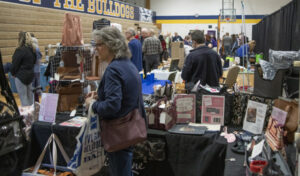
(Chelsea Update would like to thank Jennifer Fairfield, owner of the Garden Mill, for the information in this column. Part one ran yesterday.)
Things to do outdoors this month:
- On a warmer day around the end of the month, consider spraying your trees with dormant oil. Dormant oils are used to control a variety of insects, generally by suffocating them. Read the directions on the product you purchase, but in general, spray trees and shrubs when the temperatures are above 40°.
- An antidesiccant spray on your evergreens this month can help to prevent winter burn, which occurs most often in February, when the ground is typically frozen, making it difficult for the plants to get water. Winds tend to pick up this month as well, which causes evergreens to lose moisture from their leaves or needles.
Most of these sprays need to be applied when temperatures are above freezing, so be sure to check the instructions.
- Mid-February to early March is the best time for pruning many trees and shrubs because they are dormant. Pruning at this time of year will help promote new growth in the spring. Also prune to remove dead or damaged branches, to create better growing conditions for other plants in your landscape, or to make mowing or walking around your trees or shrubs easier.
Don’t prune early spring-blooming trees and shrubs at this time of year, if you want to have maximum blossoms this spring. This includes such plants as forsythia, lilacs, azaleas, and dogwoods. This is the only time of year to prune oak trees, to prevent oak wilt disease.
- While the ground is frozen, add a layer of mulch to your perennials, shrubs, and trees now to help prevent frost heave with the next thaw.
- Be sure to keep bird feeders filled. The colder temperatures mean that the birds need to burn more energy just to stay warm, so they need more to eat. You can help them out by not making them have to spend additional energy finding food.
- Also, provide a source of drinking water for the birds. When temperatures are below freezing, a birdbath de-icer or heated bath makes getting water easier for thirsty birds.













